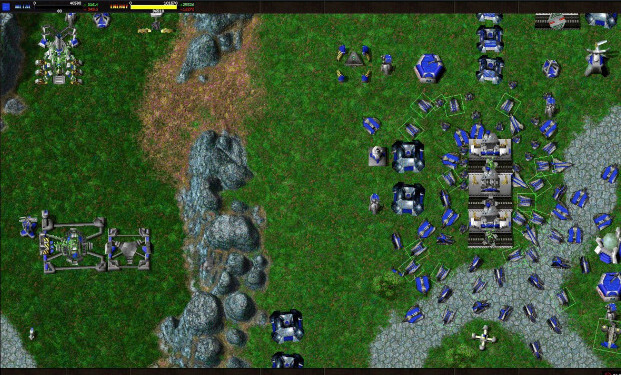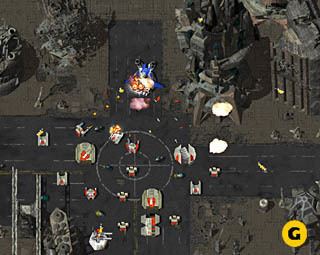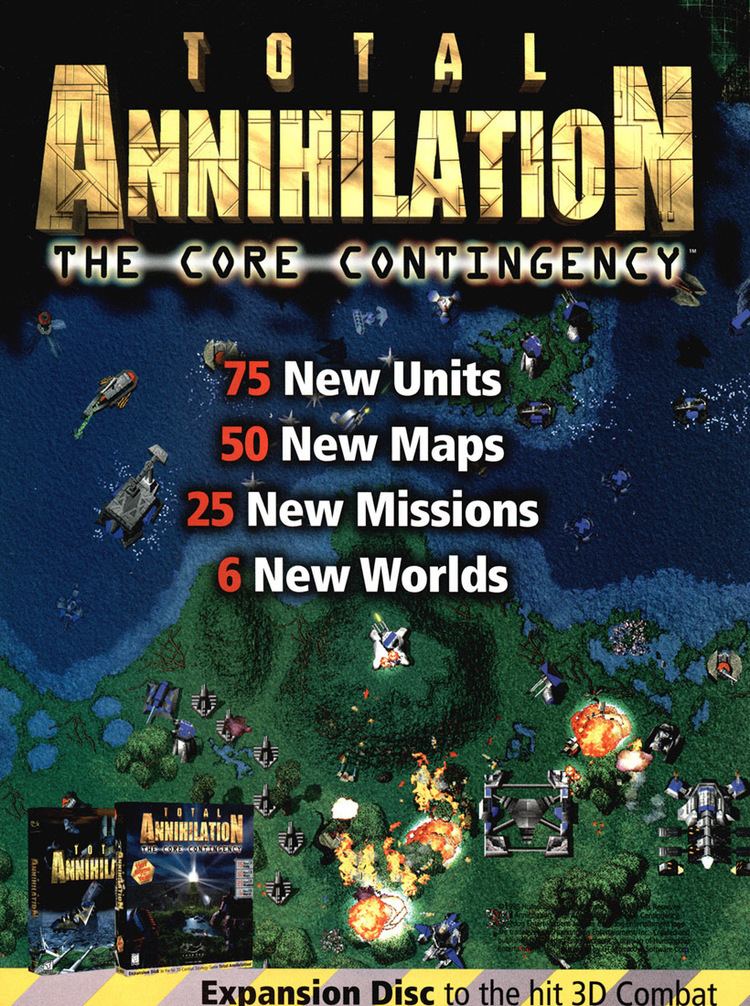

This added an additional element of electronic warfare to the game: players could construct radar jammers that prevented units in a small radius around them from appearing on radar. These advantages, however, are overshadowed by the Arm advantages in most situations.Total Annihilation was one of the first RTS games to feature radar that showed enemy units within its radius on the minimap. Core has some distinct advantage as well, such as superior naval units, level 1 bombers that drop more bombs, and less conspicuous nuclear facilities. The most noticeable differences are as follows: The level 1 Arm fighter aircraft is 1.7× more maneuverable than its Core counterpart, the Arm commander walks 1.12× faster than the Core commander, amphibious Arm Kbots float above water, making them faster and more useful than their submerging Core counterparts, Arm players can build Farks, fast assistant repair Kbots which can be crowded around labs and structures to dramatically reduce build times, and level 1 Arm tanks are equipped with superior weapons. When playing amongst experienced players, subtle differences between the two factions put Core players at a disadvantage. This is shown exceptionally well by the Arm being able to build an extremely fast Kbot known as the Zipper, while the Core can build an armored Kbot known simply as The Can. Generally, the Arm have faster, sleeker units while the Core units are built to take slightly more punishment. There are two story-related factions, Arm and Core, which have comparable sets of units (one side a little bit faster, other one a little bit tougher etc.), but are aesthetically different.

There are a few highly advanced units which are invaluable combat-wise, such as nuclear missile launchers which have enormous range and very high damage, as well as long-range artillery that have enough range to attack any point on smaller maps.

The game's consists of construction and command buttons (depending on the unit selected), unit status information, resource information on the production of Energy and Metal, and a minimap which gives an overview of the game's – the visibility of which may be hindered by, necessitating the use of radar or scout units. Effective play is usually characterized by consideration of these attributes, as well as efficient resource management, strong defenses, and knowledge of the opponent's strategies. Each unit has strengths and weaknesses, optimal styles of use, and corresponding units against which it is vulnerable or well-suited.


 0 kommentar(er)
0 kommentar(er)
